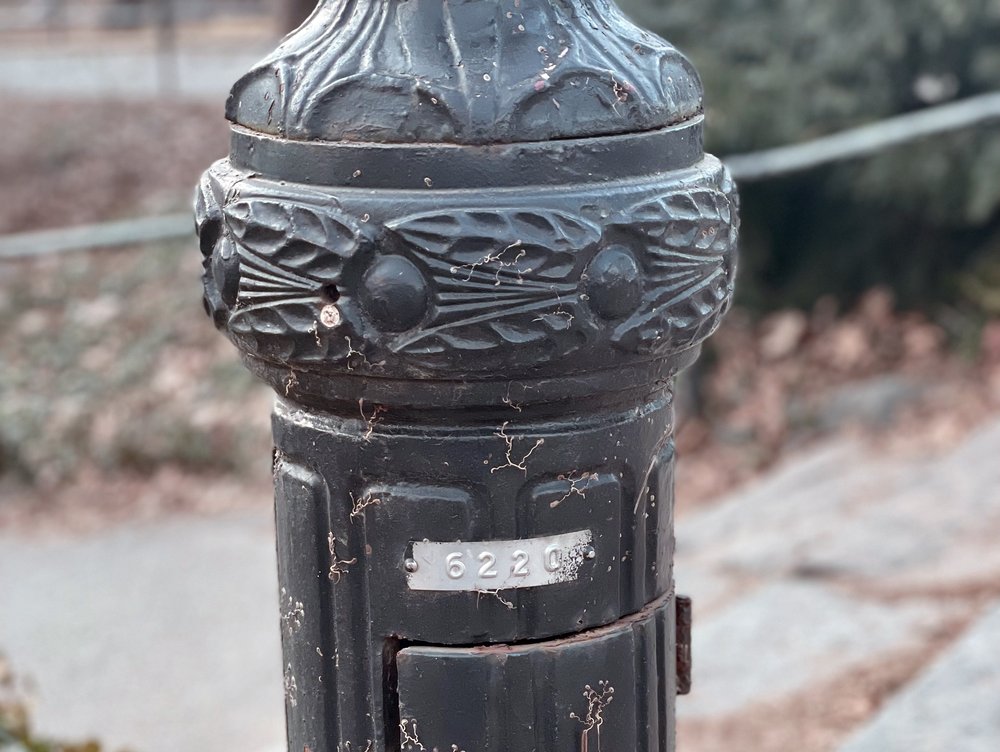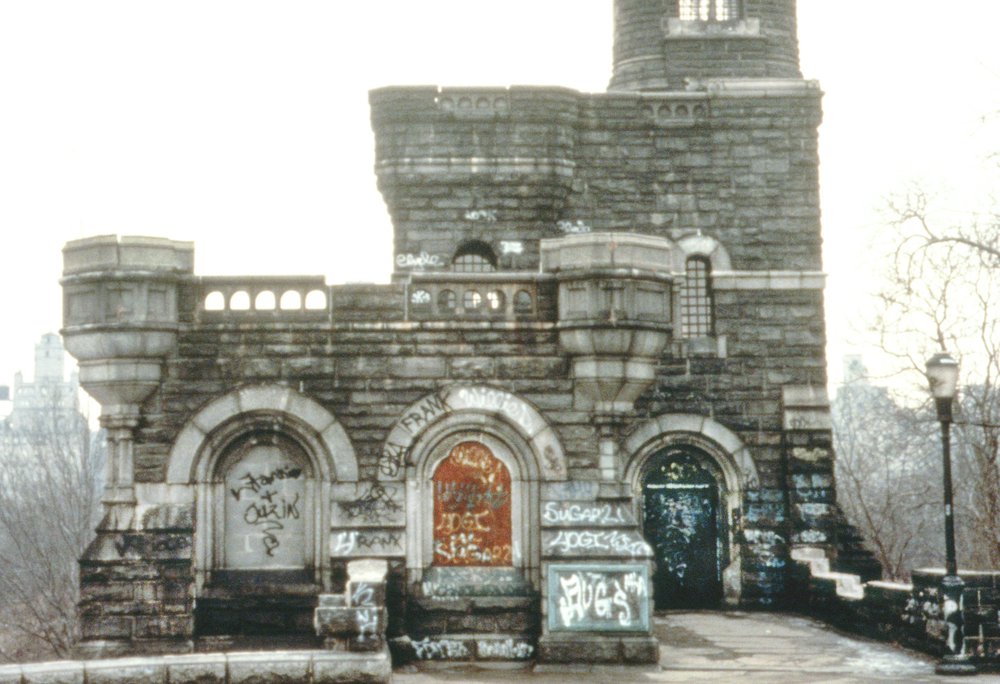There are more than 1,800 lampposts in Central Park that double as navigational markers
March 8, 2022, 3:17 p.m.
Did you know there's a little secret built into the park's lampposts?

Central Park is a vast oasis, 843 acres that New Yorkers can escape to for a hit of nature. Impeccably designed by Frederick Law Olmsted and Calvert Vaux, it was meant to be a refuge, a way to get lost — Olmsted once said it would deliver a "feeling of relief... from the cramped, confined, and controlling circumstances of the streets of the town."
Beautiful in its incongruity, the park even interrupts the city's lauded street grid — the Commissioners' Plan of 1811, the original design for the grid, didn't include a park at all, and pre-dated Central Park by several decades. In fact, within Central Park, at what would be 65th Street and 6th Avenue, you'll find a survey bolt from the early 1800s planted by John Randel Jr. as he was staking out intersections for the grid. Of course, nature claimed this area of Manhattan in the end, and the intersection would never come to exist.
But did you know that there are markers within the park that are aligned with the grid?
While traversing Central Park, you'll find a built-in way to help you navigate where you are, should you lose your way in the bucolic setting. On more than 1800 lampposts in the park, there are metal navigational markers with four numbers, and Mary Caraccioli, a spokesperson for the Central Park Conservancy, explained how to read them.
"On each lamppost, you'll see a marker that will have numbers that indicate the closest street [and] which side of the park the lamp is closest to," she said. "For example, a number of 6 7 0 1 means you're near 67th street on the West Side."
The first two numbers indicate the street you are aligned with, and the last two numbers indicate east or west. If it's an odd number, you are closer to the West Side, if it's an even number, the East Side.
The Conservancy isn't responsible for the lampposts, however, or their navigational markers. They're under the care of the city's Department of Transportation (DOT).
Vincent Barone, the DOT's press secretary, told Gothamist there is currently a tag on all 1,863 lampposts.
But no one seems to have much of a backstory on them.
"There is no record available that shows who and when someone came up with the idea to install these navigational markers on the posts," Barone said.
Sam Schwartz, former New York City traffic commissioner, told Gothamist, "These types of signs are usually put up by the streetlight maintenance company to identify service needs and requests."
As for the timeline, former Parks Commissioner Adrian Benepe told us, "They’ve been on there as long as I can remember, going back to my NYC Urban Park Ranger days in 1979." The Conservancy didn't have an exact answer, either, though offered a guess of the 1960s, when the lighting was replaced.
Benepe mentioned that Riverside Park's lampposts have the same markers, which Anastasia Galkowski with the Riverside Park Conservancy confirmed. However, she added, "We aren’t able to figure out when they were installed."

A lamppost in front of Belvedere Castle in the 1980s, just before a major rehabilitation of the park.
As for the lampposts themselves, they are the "Type B" variety, originally designed around 1910 by Henry Bacon for Central Park, though now they are all over the city.
"If Henry Bacon's name is familiar to you, it's because he helped design the Lincoln Memorial," Caraccioli, of the Conservancy, said.
A new luminaire element — designed by Kent Bloomer — was added to the top of the lamp in the 1980s when the park was undergoing a major rehabilitation, thanks to the newly formed Conservancy. According to the New York Times, "Although the lampposts survived, their elaborate lights proved fragile. By 1940, they had been completely replaced by a mixed array of lights."
But the Conservancy wanted consistency.
"The design integrity was really important," Caraccioli told Gothamist, they wanted to make sure "the luminaires were consistent design element throughout the parks."
A Look Back At Central Park In The 1980s With Then & Now Photos Here's The Original Manuscript For NYC's Street Grid Plan